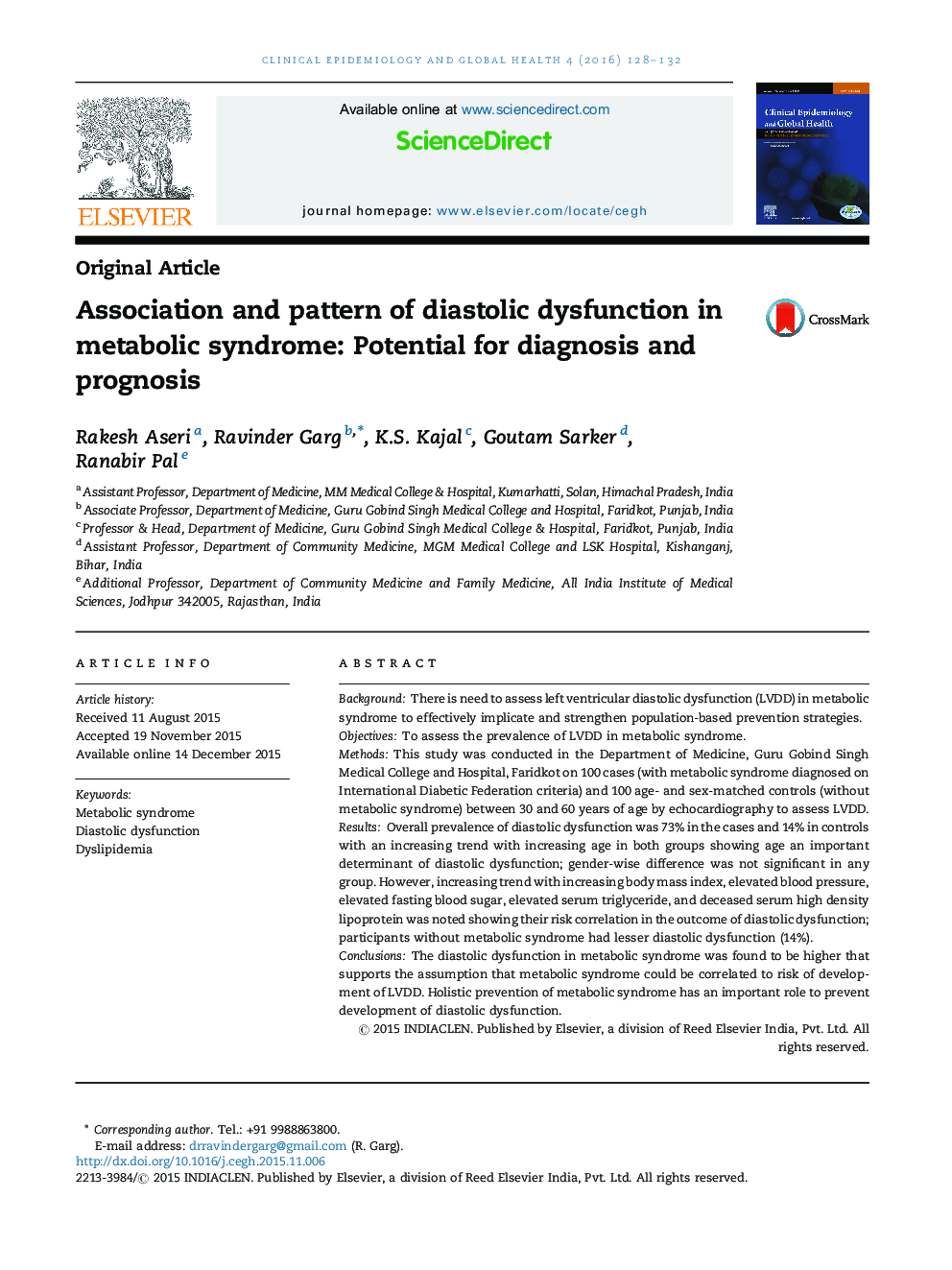| Article ID | Journal | Published Year | Pages | File Type |
|---|---|---|---|---|
| 3396218 | Clinical Epidemiology and Global Health | 2016 | 5 Pages |
BackgroundThere is need to assess left ventricular diastolic dysfunction (LVDD) in metabolic syndrome to effectively implicate and strengthen population-based prevention strategies.ObjectivesTo assess the prevalence of LVDD in metabolic syndrome.MethodsThis study was conducted in the Department of Medicine, Guru Gobind Singh Medical College and Hospital, Faridkot on 100 cases (with metabolic syndrome diagnosed on International Diabetic Federation criteria) and 100 age- and sex-matched controls (without metabolic syndrome) between 30 and 60 years of age by echocardiography to assess LVDD.ResultsOverall prevalence of diastolic dysfunction was 73% in the cases and 14% in controls with an increasing trend with increasing age in both groups showing age an important determinant of diastolic dysfunction; gender-wise difference was not significant in any group. However, increasing trend with increasing body mass index, elevated blood pressure, elevated fasting blood sugar, elevated serum triglyceride, and deceased serum high density lipoprotein was noted showing their risk correlation in the outcome of diastolic dysfunction; participants without metabolic syndrome had lesser diastolic dysfunction (14%).ConclusionsThe diastolic dysfunction in metabolic syndrome was found to be higher that supports the assumption that metabolic syndrome could be correlated to risk of development of LVDD. Holistic prevention of metabolic syndrome has an important role to prevent development of diastolic dysfunction.
